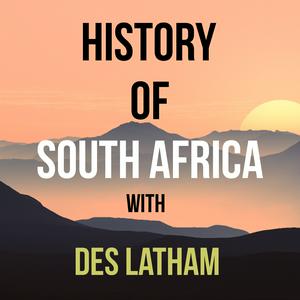Episode 230 - From Knysna’s Burning Forests to Tolstoy’s War and Peace: The World in 1869
This is episode 230, From Knysna’s Burning Forests to Tolstoy’s War and Peace: The World in 1869.
Globally, the end of the sixth decade of the 19th Century was full of fire and brimbstone, and some technology, social change, significant moments. The construction of the the Port Nolloth-O'okiep railway line is one notable tech development, but on the down side, the Southern Cape experienced a devastating fire that began in early February in the Meiringspoort area of the Swartberg Mountains, destroying numerous homesteads and ancient yellowoods. More about this in a few minutes.
IN the United States, Elizabeth Cady Stanton testified before the U.S. Congress, thus becoming the first woman to do so, and later in 1869, Stanton and Susan B. Anthony formed the National Woman Suffrage Association. Sainsbury’s opened in Drury Lane in London in May, Boston University was founded in the same month. A month later, John Hyatt patented celluloid in Albany New York, a product created by mixing nitrocellulose and camphor — thus creating the basis for the coming film revolution.
Like all good ideas, Hyatt had actually bought the original patent from Englishman Alexander Parkes who couldn’t figure out how to make money from his invention. It’s amazing how many inventions were co-opted by entrepreneurs after the inventor struggled to make a buck out of a good idea. Take the common computer mouse, invented by Stanford Research Unit student Douglas Engelbart in the early 1960s.
In the late 1970s, almost two decades after the mouse’s invention, Apple’s Steve Jobs saw a mouse being demonstrated along with what was called graphical user interface, GUI, at Xerox labs in Palo Alto California.
November the 17 however, was probably one of the most significant dates in the calendar when it came to the Cape, because that was the date that the Suez Canal was completed. For the first time in history, ships could now sail through the canal, linking the Red Sea to the Mediterranean, shortening the voyages between Europe and the far east by months. In Cape Town, there was fear and loathing about the Canal.
And so, to South Africa, let’s retrace our steps to February 1869.
It began, as such stories often do, with a wisp of smoke on the horizon.
According to the local newspapers, the fire that would become known ominously as the Great Fire of 1869 was first spotted on the 8th February. The conditions were perfect for a catastrophe. Southern Cape berg winds, searing, north-westerly to north-easterly gusts, swept down from the heights. Born of a low-pressure system sliding from west to east, they could reach gale-force strength, tearing through valleys like invisible predators. By the time the flames were first seen near Knysna, the air shimmered with heat, the humidity was almost non-existent, and the vegetation which was parched after years of relentless drought, stood waiting, tinder-dry.But in February 1869, the fire dominated every horizon. From its first sparks, it began a horrifying march: sweeping west towards Swellendam, east to Uitenhage, and threading through the Langkloof valley north of the Outeniqua Mountains. Then, inexorably, it spilled down towards the coast, devouring all in its path, Great Brak River, Victoria Bay, Knysna, Plettenberg Bay.
